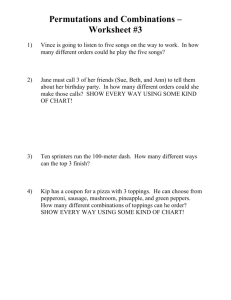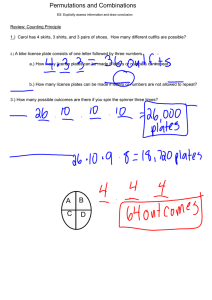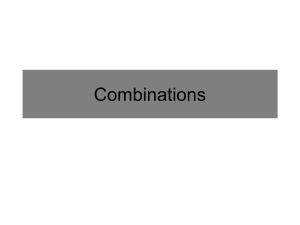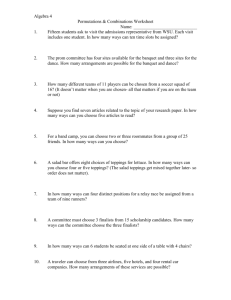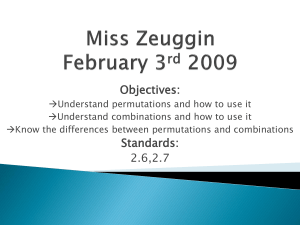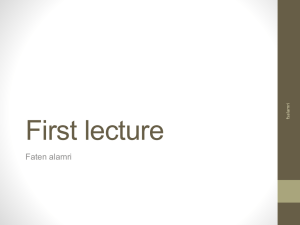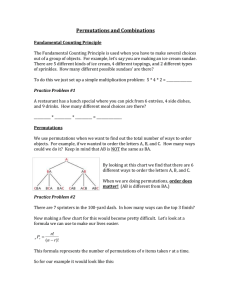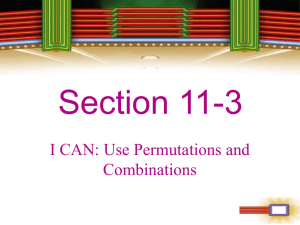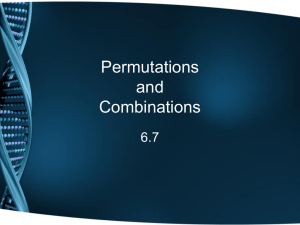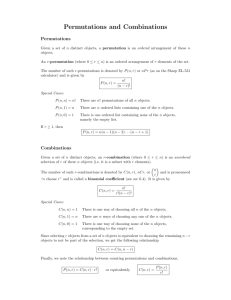mln_10.2 - Collinsville Public Schools
advertisement
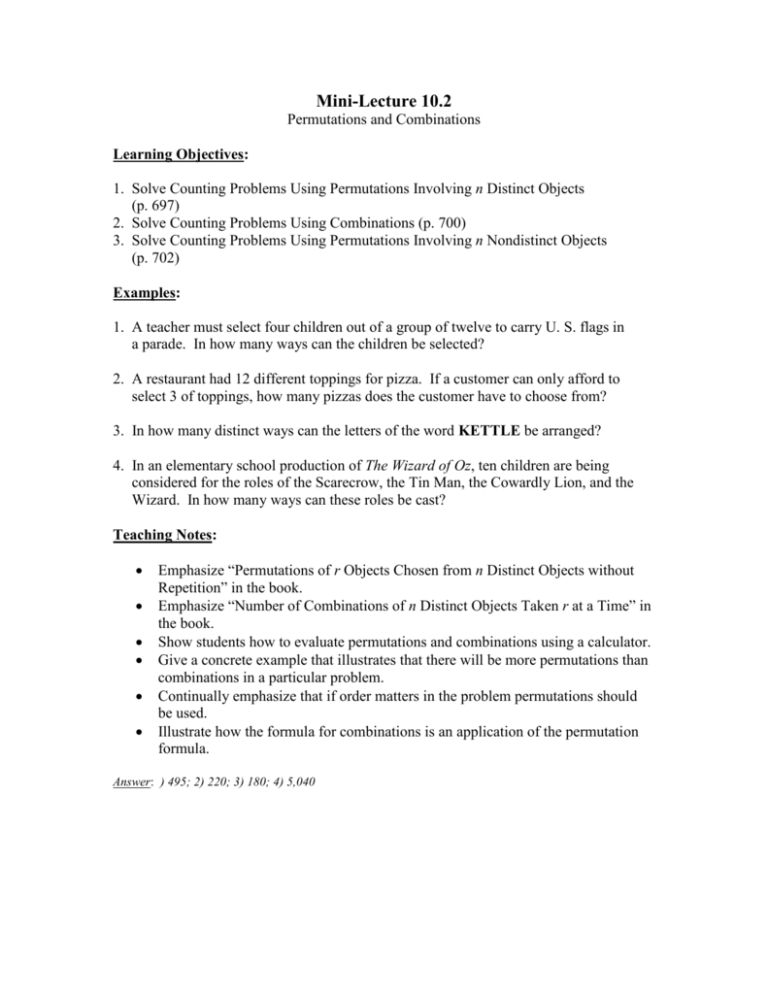
Mini-Lecture 10.2 Permutations and Combinations Learning Objectives: 1. Solve Counting Problems Using Permutations Involving n Distinct Objects (p. 697) 2. Solve Counting Problems Using Combinations (p. 700) 3. Solve Counting Problems Using Permutations Involving n Nondistinct Objects (p. 702) Examples: 1. A teacher must select four children out of a group of twelve to carry U. S. flags in a parade. In how many ways can the children be selected? 2. A restaurant had 12 different toppings for pizza. If a customer can only afford to select 3 of toppings, how many pizzas does the customer have to choose from? 3. In how many distinct ways can the letters of the word KETTLE be arranged? 4. In an elementary school production of The Wizard of Oz, ten children are being considered for the roles of the Scarecrow, the Tin Man, the Cowardly Lion, and the Wizard. In how many ways can these roles be cast? Teaching Notes: Emphasize “Permutations of r Objects Chosen from n Distinct Objects without Repetition” in the book. Emphasize “Number of Combinations of n Distinct Objects Taken r at a Time” in the book. Show students how to evaluate permutations and combinations using a calculator. Give a concrete example that illustrates that there will be more permutations than combinations in a particular problem. Continually emphasize that if order matters in the problem permutations should be used. Illustrate how the formula for combinations is an application of the permutation formula. Answer: ) 495; 2) 220; 3) 180; 4) 5,040

